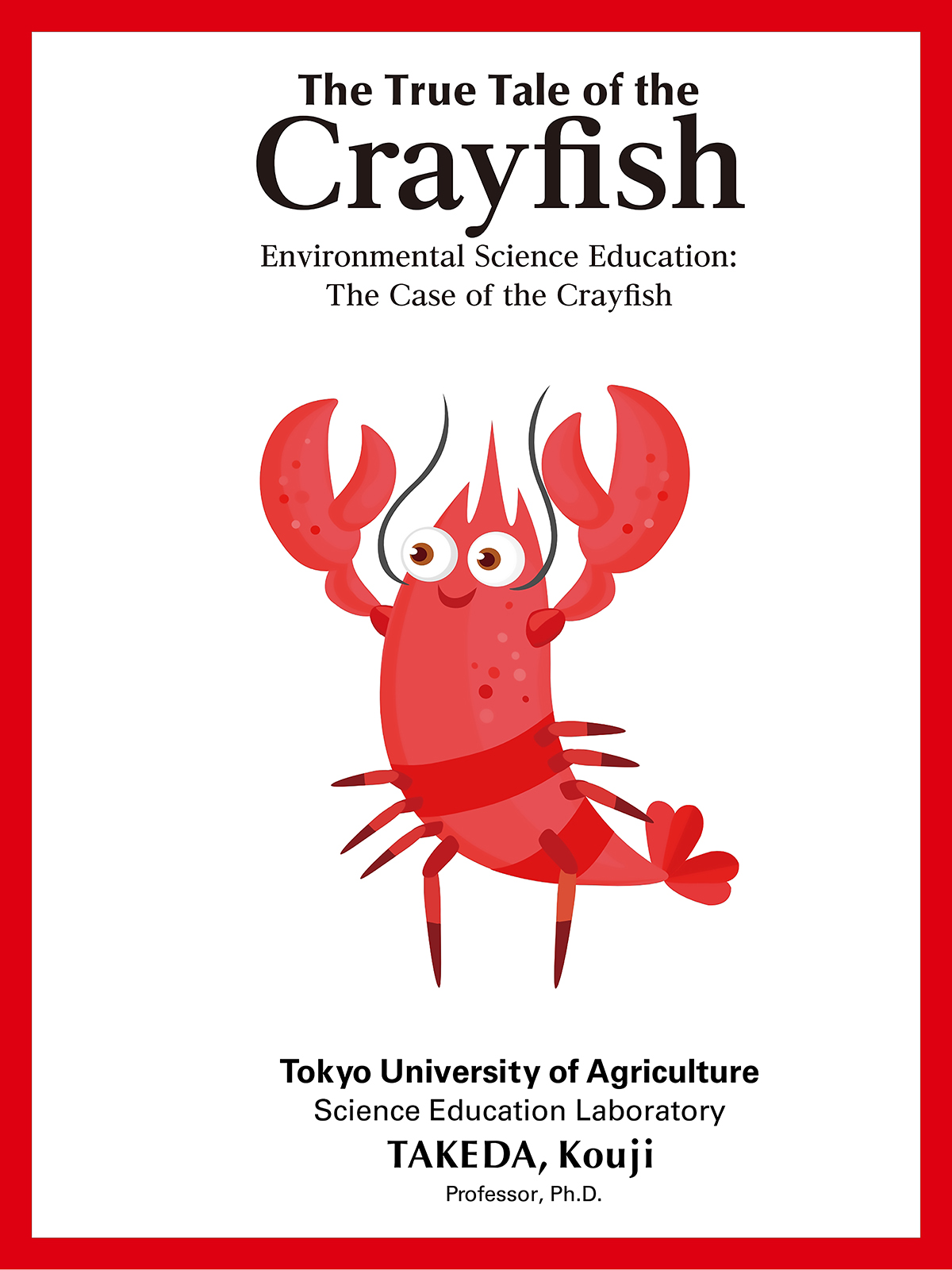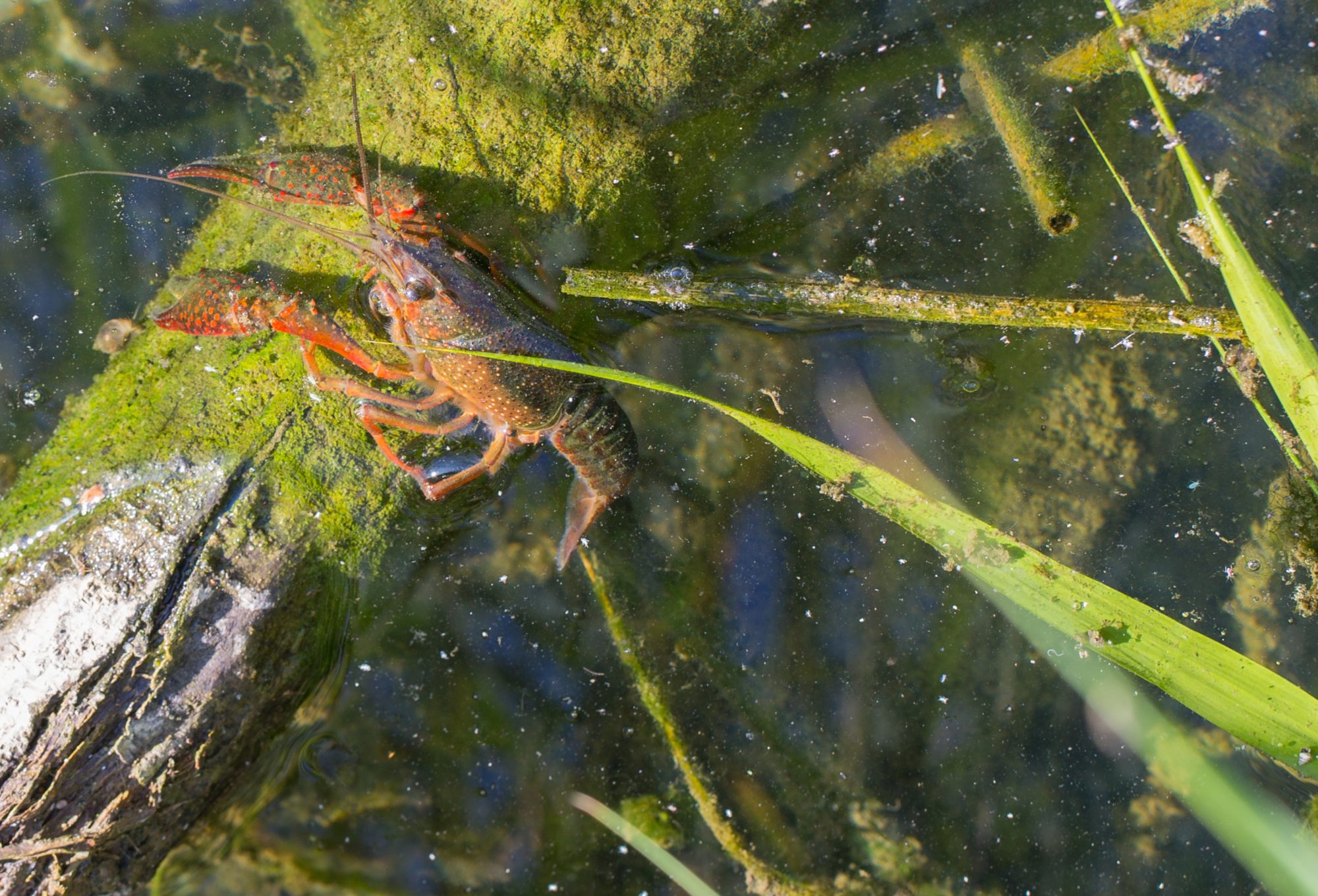Tokyo NODAI Research Program for Sustainable Agriculture discusses the Environmental Science Education of crayfish
In Japan, the crayfish (Procambarus Clarkii) is a familiar species, but it is also an active target for extermination because of its impact on ecosystems such as native aquatic insects and waterweed communities, and because it is a cause of agricultural damage such as feeding damage to rice seedlings and collapse of the rice paddy’s banks. Learning more about the species through environmental science education is a necessity.
There are few cases where crayfish are actively utilized in Japan, but in Europe, the United States, and China, crayfish are used as a food (protein source). In other words, the eradication and utilization of crayfish in Japan would have to protect the local environment and other local resources, and lead to the development of new resources as sustainable agricultural resources. However, it is not easy to immediately recognize crayfish as a food source in Japan, as it has not been recognized as a common food source in the country.
Therefore, we considered educational activities using the crayfish as a resource through environmental science education, in which students learn about “Environment, Invasive species, Life of creatures, Resources, and Food.” In addition, we decided to make use of our expertise in the environment and food, which is the mainstay of Tokyo University of Agriculture, and to work on the utilisation of crayfish for food and agricultural materials as a useful resource in order to reduce the environmental burden for future food problems.

In this process, the crayfish will be cultivated in aquaponics, which combines crayfish and leafy vegetables in a hygienic environment through the circulation of clean water. Furthermore, crayfish will be studied from a nutritional perspective and their safety will be evaluated so that they can be used as food for humans and animals. Then, the shells are used as food additives and the inedible parts as fertilizers, aiming to utilize crayfish as a sustainable agricultural resource.
This article describes the environmental science education practices that form the core of the project, as well as the booklet prepared as a guide of our project and the aquaponics based crayfish breeding system.
Teaching Practice of Environmental Science Education
We conducted environmental education to raise interest in familiar organisms through ecological surveys triggered by crayfish as a form of social education in the community and conducted environmental conservation activities through extermination. The exterminated crayfish were also used for observation and scientific experiments on body colour change as part of public lectures for elementary, junior high, and high school students and extracurricular classes at schools. Then, educational practices on “Environment, Invasive species, Life of creatures, Resources, and Food” were conducted in elementary schools and public lectures to explain the concept of crayfish as a food and agricultural resource, as well as its significance as a sustainable agricultural resource.
Through the class practice, it became clear from the students’ written comments that the crayfish provided an opportunity to rethink environmental conservation and the lives of living creatures, as well as a chance to view crayfish as a resource. In addition, a booklet was prepared for students and parents on the seven points covered in this class (Habitat of crayfish, Characteristics, History of introduction, Habitat range in Japan, Alien species problem, Colourful crawfish, and Resource).

The True Tale of the Crayfish in Japan
This booklet is a guide to “Environmental Science Education” and focuses on the crayfish, which can be found all around you. The top part of each page is a story for children, and the bottom part is the Japanese translation so that parents and teachers can read the story to their children.
Crayfish are common invasive species in the world. What is often overlooked when considering the problem of invasive species is that “once the natural environment has been touched by humans, it needs to be continuously maintained and managed by humans.” In addition, managing nature includes not only preserving the landscape, but also managing the living organisms that are connected to maintaining the ecological balance. However, few people seem to understand this point.
That is because, when it comes time to clean up ponds and swamps, there is a tendency to think that the invasive species that ultimately survive are to blame. This is despite the fact that the lack of continuous maintenance and management by humans is responsible for the situation. Here, we raise the question of why the crayfish is a problem and look at the issue from both the human’s and the crayfish’s perspectives.
We hope that the crayfish will be an opportunity for people to think about how humans and the environment, as well as the creatures that inhabit it, can coexist. We hope that parents will read the booklet to their children in the lower grades of elementary school and think about it with them.
Crayfish Breeding Equipment in Aquaponics
In a conventional aquaponics tank, plants are grown in the upper part of the tank and crayfish are kept in the lower part of the tank. However, in this breeding system, when pumping water from the lower tank to the upper plants, possible problems such as crayfish escaping through the hose, accumulation of dirt in the lower tank with crayfish, cannibalism due to keeping many crayfish in a limited space, and food damage to crops were considered. To solve these problems, we attempted to improve the rearing equipment as shown in Photo 1.
In contrast to conventional aquaponics equipment, the crayfish rearing area was placed at the top, and plants were grown in the bottom area. This made it possible to prevent accumulated dirt (leftover food and faeces) from accumulating in the tank, to increase the number of tanks, to prevent mass rearing and escape, and to prevent food damage to crops. In addition, since materials other than pumps can be procured inexpensively, it has become possible to create breeding equipment that is less expensive than conventional aquariums for future use as teaching materials. We are also currently working on a large-scale closed aquaculture system using groundwater for crayfish rearing.
In the future, the nutritional value and safety of the crayfish cultured by these devices will be verified, and future utilization of crawfish resources in Japan will be promoted based on environmental science education.
Authors: Takeda K., Higuchi S., Ono H., Asai T. Kato T., Suzuki T., Takahashi N., Miyajima K., Kurosawa A., Komatsu K. and Okazawa H.
Funding: Tokyo NODAI Research Program for Sustainable Agriculture
Acknowledgement: We would like to thank Dr. Junichi Nakagawa for advice and suggestions for the article
*Please note: This is a commercial profile.
© 2019. This work is licensed under CC-BY-NC-ND.











